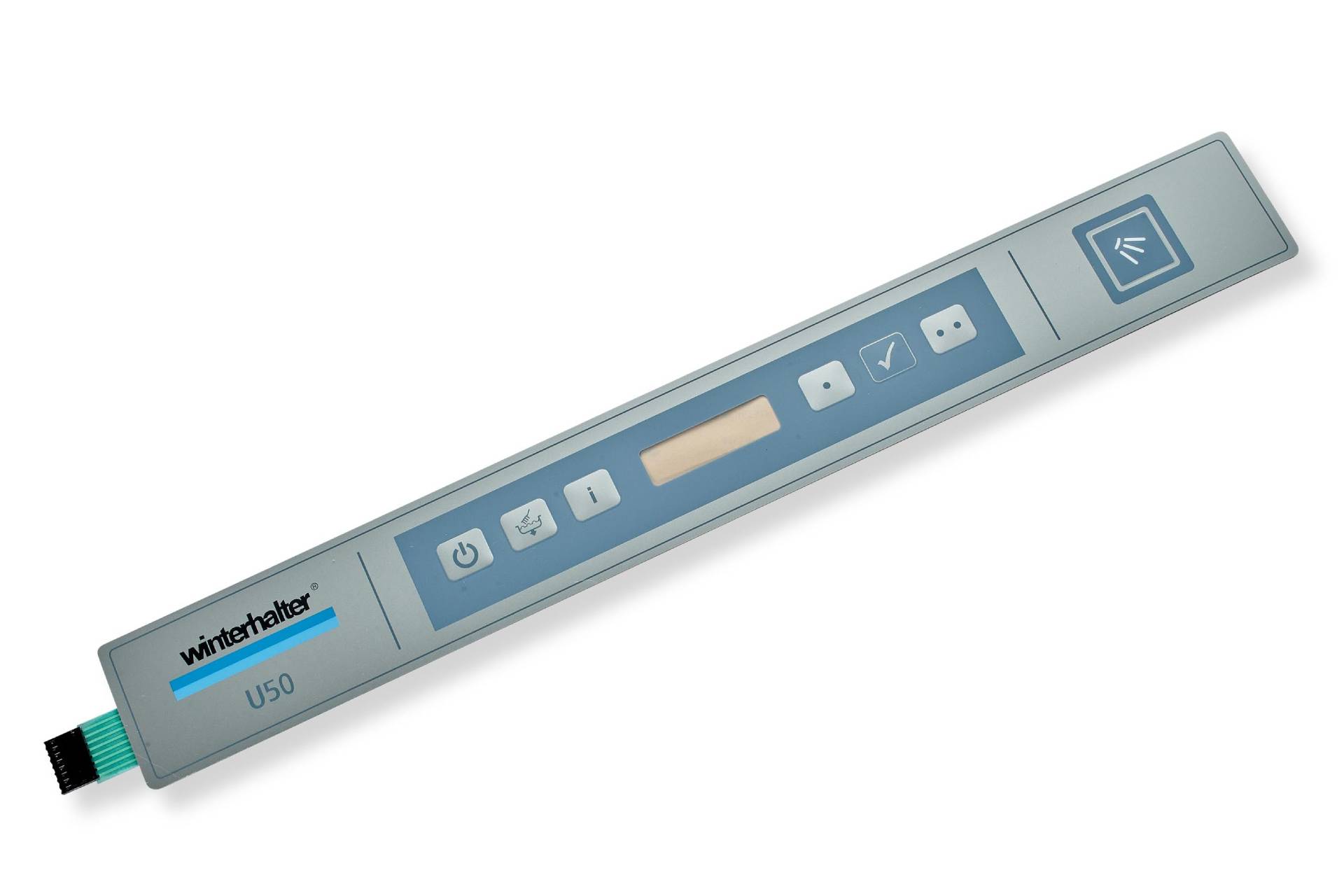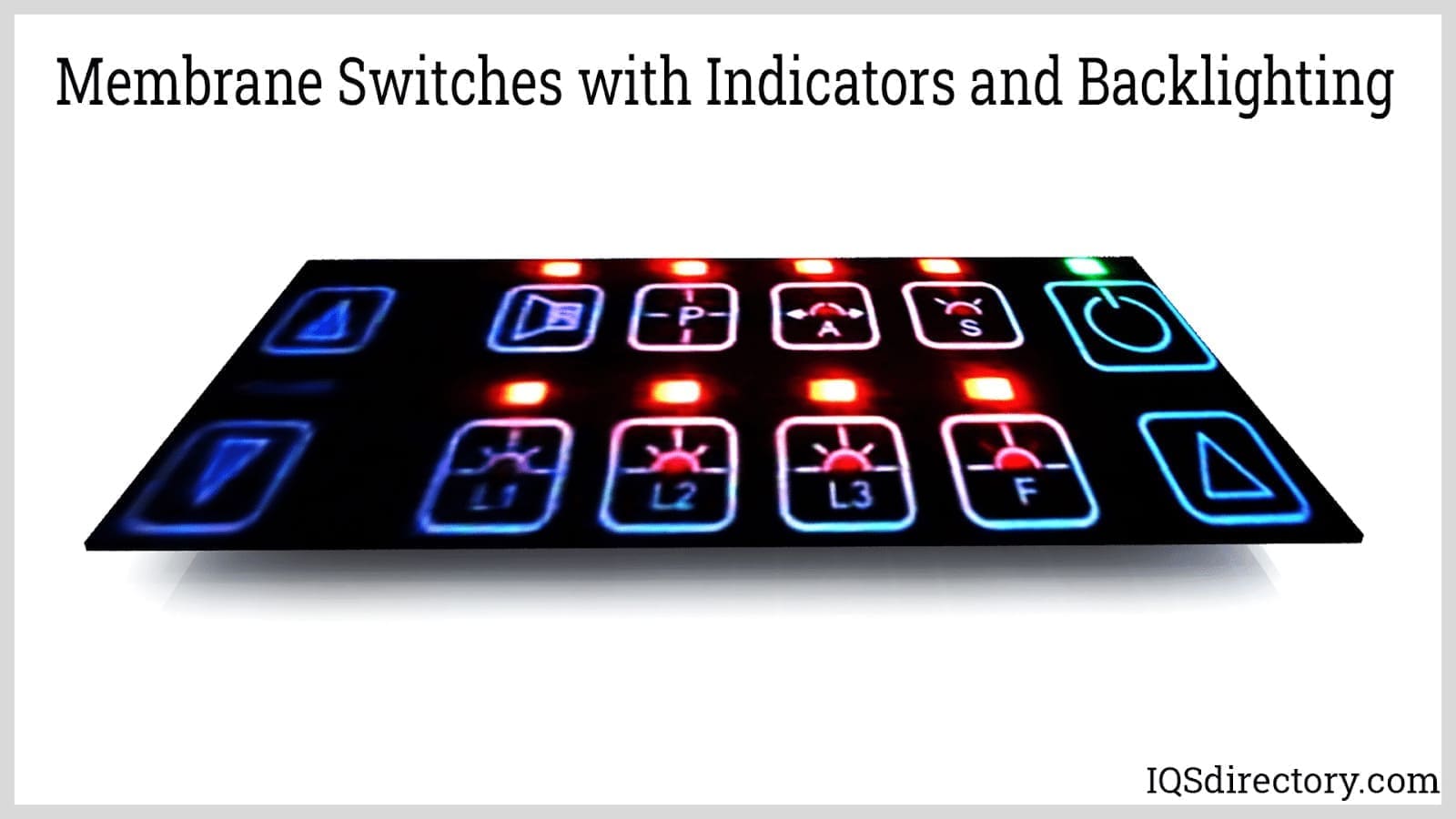Why membrane switch is critical in aerospace control systems
Understanding the Relevance of Membrane Switch in Modern Electronic Devices
Membrane switches are integral elements in contemporary electronic gadgets. They use a blend of performance and layout that boosts individual communication. Their lightweight and durable nature makes them suitable for different applications. As industries evolve, the need for customization and progressed functions expands. Understanding exactly how membrane layer changes add to advancement exposes their importance fit the future of electronics. What exists in advance for this innovation?
The Essentials of Membrane Change Innovation
Commonly ignored, membrane layer switch modern technology plays a vital role in the contemporary electronic devices landscape. These devices, composed of several layers, act as interface for different digital items, ranging from household appliances to medical equipment. A normal membrane button includes a visuals overlay, a spacer layer, and a circuit layer, which are diligently put together to create a practical interface.When pressure is put on the overlay, the circuit layer is finished, enabling signals to be sent to the tool. This innovation is known for its versatility, allowing personalization in style, shape, and functionality to fulfill specific individual demands. Additionally, membrane buttons are thin and light-weight, making them appropriate for applications where space is a premium. Their resilience and resistance to environmental aspects even more improve their appeal, guaranteeing they can withstand rough problems while maintaining performance. In general, membrane switch technology is essential to developing easy to use and efficient digital tools

Trick Advantages of Membrane Layer Changes
Membrane changes deal a number of crucial benefits that make them a recommended option in numerous digital applications. Their layout enables a small form factor, allowing makers to produce light-weight and streamlined tools. In addition, membrane switches are immune to dirt, moisture, and chemicals, which enhances their longevity and long life sought after environments. The tactile feedback supplied by these switches can enhance individual experience, making them easy and user-friendly to operate.Furthermore, membrane switches can be personalized with varied graphics and colors, enabling distinct branding chances. The manufacturing procedure is usually affordable, especially for high-volume manufacturing, as it reduces setting up time and simplifies layout. Ultimately, membrane layer changes call for very little upkeep, adding to lower total operational costs. These advantages emphasize their expanding appeal in modern electronics, where reliability and straightforward interfaces are essential.

Applications Throughout Numerous Industries
The convenience of membrane layer switches over allows their extensive adoption throughout different sectors. In the clinical field, they are commonly utilized in diagnostic equipment and client tracking systems, providing a durable interface resistant to pollutants. The automotive industry uses membrane switches for dashboard controls, enhancing customer experience with smooth designs that endure rough problems. In consumer electronic devices, they serve as control panels for devices such as microwaves and coffee manufacturers, providing a straightforward interface that is very easy to tidy. The aerospace market employs membrane buttons in cabin controls, where dependability and space effectiveness are critical. Additionally, the commercial industry leverages these buttons in equipment and control systems to guarantee durable operation popular settings. This broad series of applications highlights the adaptability of membrane buttons, making them integral components in boosting capability and customer communication across varied technological landscapes.
Personalization and Layout Flexibility

Future Patterns in Membrane Layer Switch Over Development
Emerging fads in membrane button growth indicate a growing emphasis on boosted performance and assimilation with clever modern technologies. As consumer demand for much more sophisticated electronic devices boosts, makers are focusing on producing membrane switches over that not only offer basic operational roles but also include attributes like touch sensitivity, backlighting, and haptic feedback.Furthermore, developments in materials are anticipated to enhance longevity and ecological resistance, making membrane layer switches appropriate for diverse applications in sectors such as medical care, automobile, and consumer electronic devices. The assimilation of capacitive touch innovation is likely to come to be a lot more widespread, enabling for sleeker layouts and enhanced user interfaces. membrane switch.Additionally, the increase of the Internet of Points (IoT) is prompting the growth of membrane layer changes that can connect wirelessly with other tools, improving interconnectivity. Generally, the future of membrane switch technology shows up appealing, driven by development and the search of easy to use solutions
Regularly Asked Concerns
Just How Do Membrane Changes Compare to Typical Mechanical Switches?
Membrane layer buttons, being more space-efficient and supplying a smooth layout, contrast with conventional mechanical switches that supply responsive feedback. The former often feature personalized graphics, while the last commonly guarantee toughness and integrity in different applications.
What Materials Are Commonly Made Use Of in Membrane Switch Over Production?
Membrane switches are typically created using materials such as polyester, polycarbonate, and published conductive inks. These products provide toughness, flexibility, and responsiveness, making them ideal for various applications in electronic devices and interface.
Can Membrane Layer Changes Be Repaired or Reused?
Membrane switches can commonly be fixed, specifically over here if small problems develop, such as glue failing or surface area damage. However, total reuse is commonly restricted because of wear and possible degradation of materials with time.
How Do Environmental Variables Impact Membrane Layer Change Efficiency?
Environmental variables, such as humidity, temperature level, and exposure to chemicals, greatly affect membrane button efficiency. Extreme conditions can result in degradation, affecting responsiveness click here to find out more and longevity, ultimately jeopardizing the capability of the device in numerous applications.
What Is the Regular Life Expectancy of a Membrane Layer Switch over?
The normal life expectancy of a membrane button normally varies from 1 to 5 million actuations, depending upon elements such as usage frequency, ecological conditions, and the materials utilized in manufacturing, impacting toughness and performance longevity. A common membrane layer switch is composed of a visuals overlay, a spacer layer, and a circuit layer, which are carefully set up to create a useful interface - membrane switch.When pressure is used to the overlay, the circuit layer is completed, permitting signals to be transferred to the gadget. The tactile responses offered by these buttons can boost individual experience, making them intuitive and simple to operate.Furthermore, membrane switches can be personalized with varied graphics and colors, enabling for unique branding chances. As consumer demand for a lot more advanced electronic gadgets boosts, suppliers are concentrating on creating membrane layer switches over that not only serve basic my response functional duties however likewise include features like touch sensitivity, backlighting, and haptic feedback.Furthermore, improvements in products are anticipated to improve resilience and ecological resistance, making membrane switches appropriate for diverse applications in industries such as healthcare, automobile, and customer electronic devices. The combination of capacitive touch modern technology is most likely to end up being a lot more common, enabling for sleeker layouts and boosted user interfaces.Additionally, the increase of the Internet of Things (IoT) is motivating the development of membrane switches that can connect wirelessly with other devices, improving interconnectivity. Membrane buttons, being more space-efficient and using a smooth design, comparison with traditional mechanical buttons that offer responsive responses